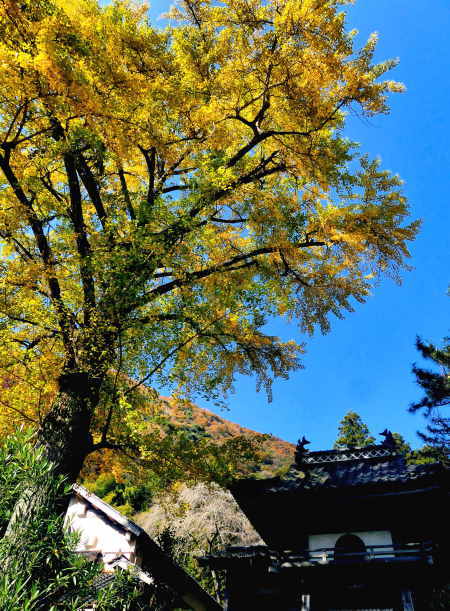Kannabiji Temple's Gingko
It's that time of the year when I post some pics of this year's autumn colors. About three weeks ago Yoko had a day off that coincided with a beautiful sunny day so we headed off on a local trip to see if we could find some color. The first stop was Kannabiji Temple, a few kilometers upstream on the Gonokawa River.
All that remains now is the main hall, a large residence for the priest, a gate, and a large storehouse. I went inside the main hall many years ago and was surprised by a mural on the ceiling and the brightly-painted woodwork. I really want to go back and take a lot of photos. I've also been inside the old priest's house though he now lives in a newer house in front of the temple.






























































